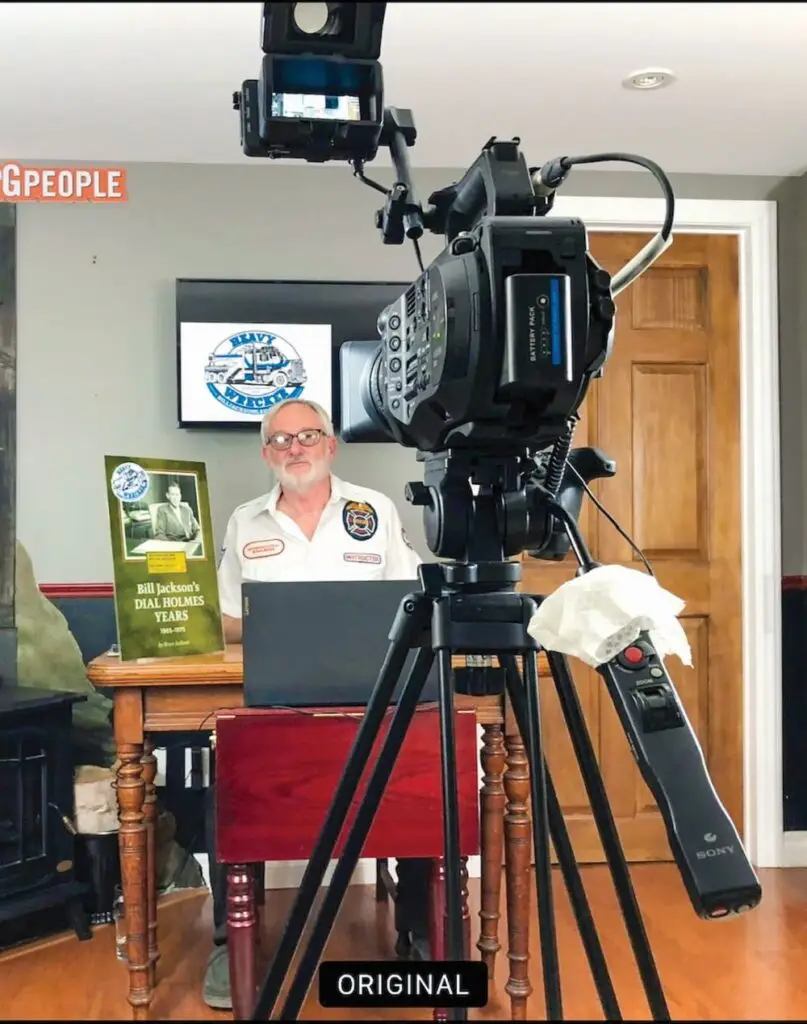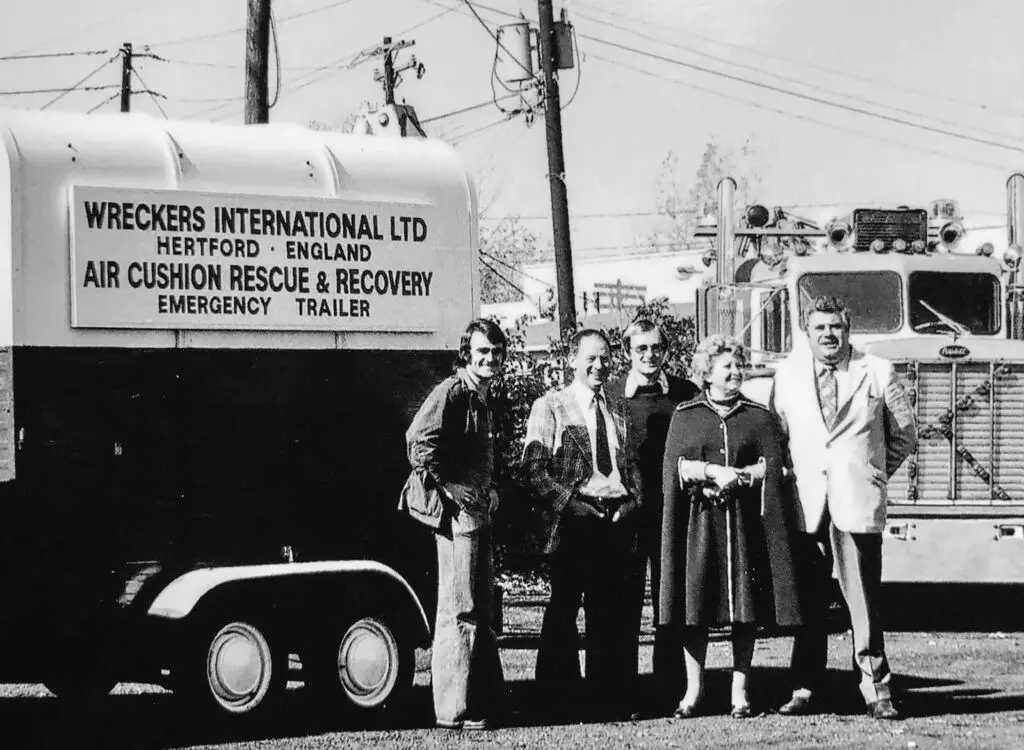Bruce Jackson follows in his father’s footsteps as an inductee.
by Pat Rediger
In the case of Bill and Bruce Jackson, the apple does not fall from the tree, although in this case it might be more appropriate to say that the son is following in his father’s tow truck tracks. Bill was a key player in the industry, and he is known as the father of the air cushion system, a story that began in the 1960s.
Bruce has continued down his father’s path as an industry trailblazer. He introduced Holmes wreckers to France, and later he introduced the NRC sliding rotator to both the United Kingdom and France. For their efforts, Bill and Bruce will both be inducted into the International Towing and Recovery Hall of Fame and Museum in Chattanooga, Tennessee. Bill was inducted in 1986, and Bruce’s turn is taking place this year.
“The bottom line is that the people in this industry are so nice,” said Bruce. “Personally, I can’t say that I’ve saved anybody’s life, but I know hundreds of people who have by using air cushions and wreckers.”
Bruce’s story is intertwined with his father’s, and it begins back in the United Kingdom shortly after World War II ended. Bill took over his own father’s two Ford dealerships in 1947, and he purchased a used Holmes wrecker the following year at a U.S. military sale. That twin-boom wrecker changed the towing industry, as it had twin booms that could be split and was power-operated.
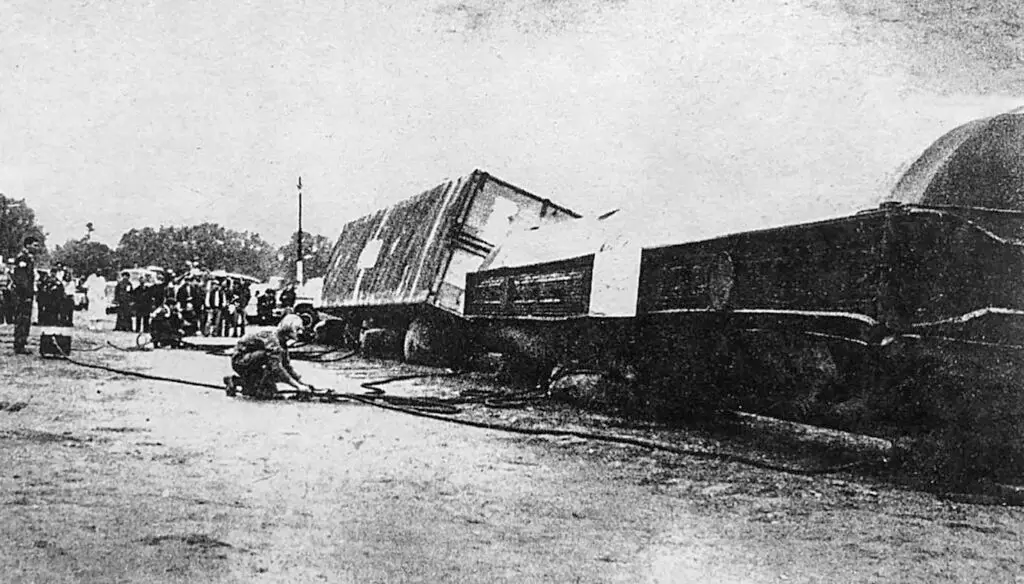
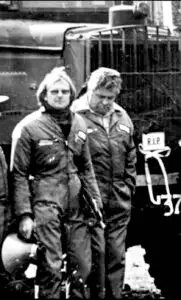
Bill was so impressed with the wrecker that he visited the Holmes plant in Chattanooga in the early 1960s and secured the Holmes dealership for everywhere outside of North America. Bill ran with this idea and set up agents and dealers in France, Germany, Holland, Belgium, South Africa, Nigeria, India, and the Middle East.
That was only one of Bill’s many claims to fame. During the late 1960s and early 1970s, he developed the air cushion system of heavy lifting. After watching a local fire department using small air cushions that were blown up by compressed air to free accident victims from their vehicles, Bill theorized that the sample principles could be applied to lift large trucks and other loads. This led to the creation of his air cushion recovery system, which eventually evolved into the Matjack system.
Bill later started International Wreckers in Florida. He was the first recovery instructor, and he started the first vehicle recovery school. He also published eight books in his retirement and passed away in 2016.
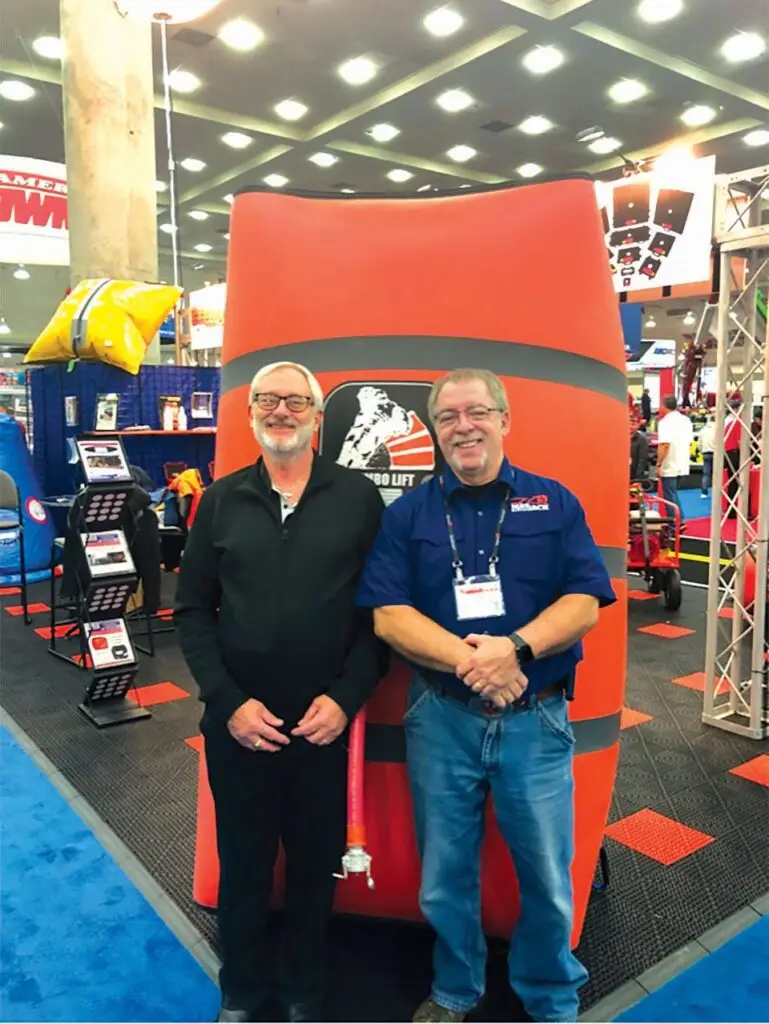
INDUSTRY INTRODUCTION
It was obvious that the towing industry was in Bruce’s blood at an early age. “When I was a kid and my father would receive a call on a breakdown or accident, I used to go with him on the weekends and evenings. I was 10 or 12 years old at that time, but it was just a fun thing to do, and it carried on into my teen years,” said Bruce.
After finishing high school Bruce attended college, but he never completed his final exams due to illness, so his dad invited him to work for his company, which was distributing Holmes wreckers. Bruce agreed, and his father had him apprentice under Albert Carter, a former World War II army engineer who had spent years rescuing damaged military vehicles in Italy.
“I enjoyed it immensely,” recalled Bruce. “I used to go out to accidents with him, and he and I did everything together. That was my basis in the towing industry, then I went on to work in every department of Dial Holmes and Wreckers International in Hertford, U.K. I eventually became CEO of that company between 1977 to 1983.”
After apprenticing under Carter, Bill suggested that Bruce travel to the U.S. to gain a better understanding of how Holmes wreckers were made and marketed so they could use that information as they made inroads in other markets around the world. In 1969 Bruce met Ernest Holmes Jr., son of the company’s founder, who along with his father, Ernest Holmes Sr., was among the first inductees into the International Towing Hall of Fame.
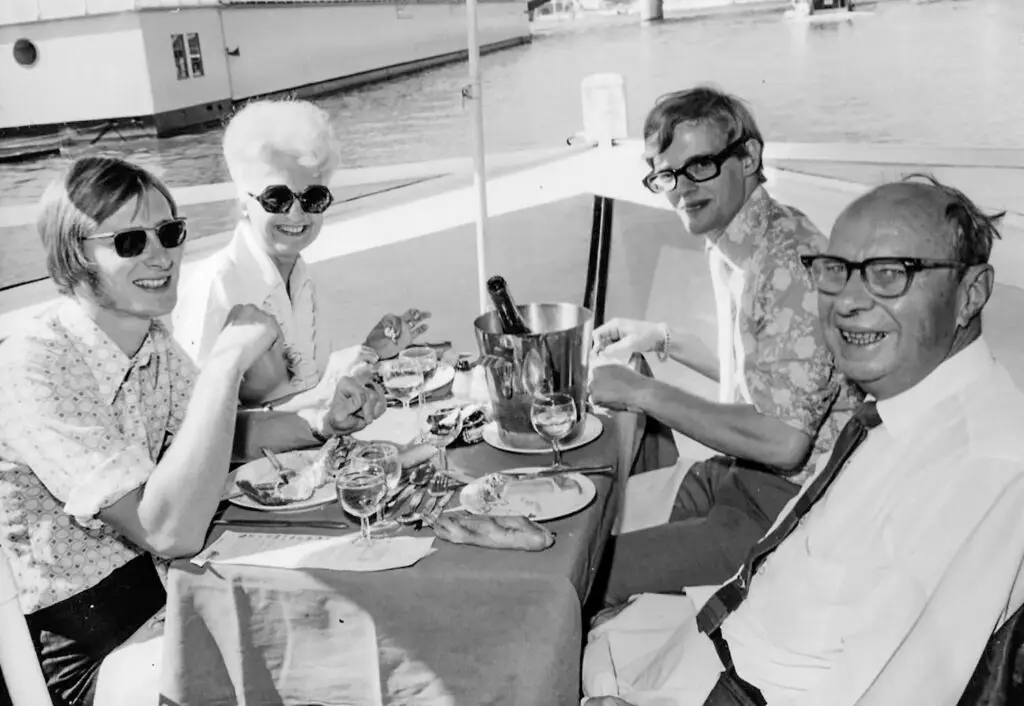
The knowledge obtained from this visit played a key role when Bill asked Bruce to find a dealer for the Holmes wreckers in France in the early 1970s. Bruce headed to Paris and met with the CEV (Charvagat et Vasseur) owners, who eventually became the first European distributors for the company.
“In 1972 Ernest Holmes himself came to France, and we took him around Paris and showed him CEV. I remember it well. We all stood beside the first post-war Holmes wrecker in Europe for a photograph,” said Bruce.
AIR CUSHIONS
In the 1960s Bill adopted air cushions for the towing industry, and by 1975 the system was selling well in the U.K., and he wanted to break into the U.S. market. Bruce and a couple of co-workers loaded up a horse box of air cushions, shipped them to the U.S., and they headed to New York City.
“We went and picked up the cushions, bought a van, and traveled across the U.S. for the next six to eight weeks. We found a company called Kinman Wrecker, and they became a dealer for these air cushions. To make a long story short, this became the start of a very massive industry. In the first few years they sold 400 sets to the Ernest Holmes Company in Chattanooga,” said Bruce.
With sales of the air cushion booming, Bill made the decision to emigrate to the U.S. to head up the company’s growing operations in that part of the world. Bruce became the CEO of Wreckers International while Bill drove sales in the U.S.
Bill changed the company name in America to International Wreckers and set up his headquarters in Florida. He eventually sold the air cushion technology to Matjack in 1983.
Bruce moved to Canada in 1996. Before moving, Bill introduced Bruce to members of the Pigeon family, which owned NRC Industries in Saint-Paul-d’Abbotsford, Quebec, and had created the world’s first sliding wreckers.
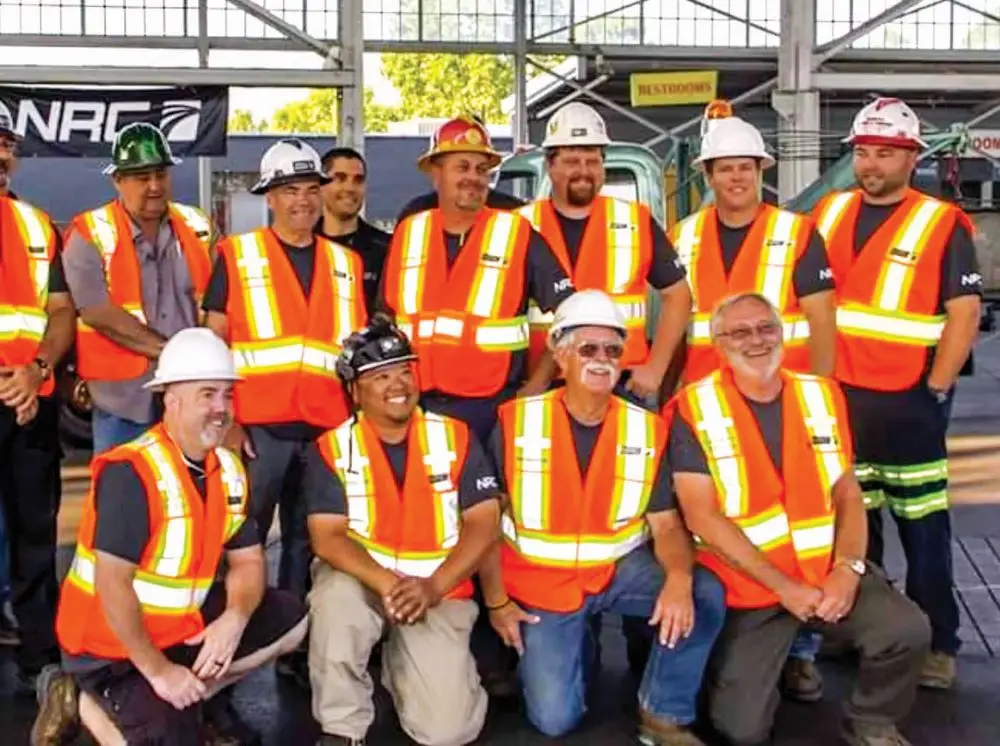
NRC INDUSTRIES
“I told them that I was going to live in Canada, and they said, ‘when you get here, come see us,’ which is what I did. Since I was experienced in the wrecker industry in Europe and I spoke French, they gave me a chance to find a distributor for them in Europe. At that time, they only sold sliders and rotators to Canada and the U.S.”
Bruce made the rounds to various distributors in Europe and reached an agreement with Roger Dyson in the U.K. He later toured France with his father, and they reached an agreement with CEV to become the distributor for NRC sliders in that country. Working closely with Norbert and Stephane Pigeon, Bruce helped set up distributorships in South Africa and the Middle East. Today international sales constitute a large part of the overall sales for NRC.
Bruce retired from NRC in 2018 but remains active with the company as a consultant. He has also turned his talents to writing (with editing by his wife Valerie), and he has authored two books on Wreckers International newsletters, as well as re-releasing some of his father’s books. He has also spent his time helping to develop the website, billjacksonlegacy.com, which outlines his father’s accomplishments. It also contains photos and sells books, ebooks, and videos.
It was Norbert Pigeon who nominated Bruce for the Hall of Fame, and he was actually on hand when Bruce received the call that he was being inducted.
“We were at NRC at a meeting, and I couldn’t take the call because of the meeting, so they called back at lunch time. Clarissa (Powell, publisher, Tow Times) asked if I was sitting down because I had been inducted into the Hall of Fame. I thought you’ve got to be kidding, and we started laughing. She said you can tell Norbert that his application was successful, and I said that you can tell him yourself since he’s sitting right beside me. So that’s how I found out,” said Bruce.
The Towing and Recovery Hall of Fame was launched in 1986 to recognize individuals who have made substantial contributions to the towing and recovery industry. Over 300 towing professionals have been inducted to date. This year’s induction ceremony will take place on September 30, 2023. 🍁
